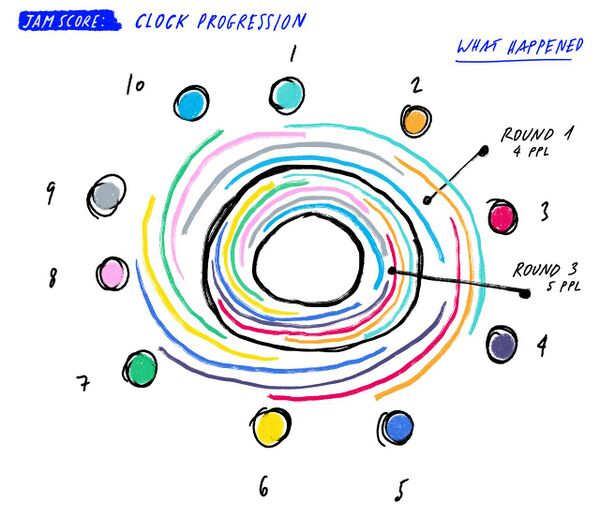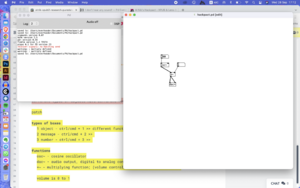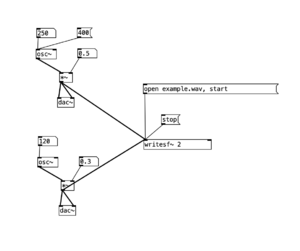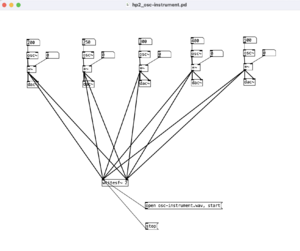Al Nik's Hackpact
_about
it's just a toy! - bruno
here are several research & experiments hackpacts to start with ⟿
_[audiozines]
// 27-09-2022
[format] playing with audiozines as focus on format rather than on a topic.
[wip pad] is here
[process log]
research - i became quite interested in zines as a format and since we're experimenting with audio a lot, the combo looks like a good starting point for me. Started with a small research. (more details in the pad)
timeline
_1970-1980s - audio cassettes
_1997+ - compact discs (becoming more hybrid, + image and video)
_2000s - web based; podzines (ipods; downloadable)
_2010s - becoming podcasts
main characteristics
_small scale content
_analog turned digital through tech development
_notion of limitation - in length, in size, in accessibility
_often come in series
_radical, anarchistic content (now)
_independent publishers (now)
_spoken words
_non-fiction content, but often connected to science fiction pieces (at least for a few decades)
_curated, conceptual content
_DIY culture
why interesting in audiozines?
_DYI and independent publishing notion
_limitations - in terms of length, accessibility, distribution - small scale contents
_conceptual (curated, but raw)
_connection to analog - audio cassette origins
_connection with print zines - can have its own printed zine edition as well
_[pure data intro]
// 28-09-2022
[format] experiment with focus on format (instead of topic). First baby steps in getting to know Pd.
[work] with Mitsa
[wip pad] is here
[process log]
research - for the experiment, i have researched a bit what pure data is and what tutorials we can use to start. As Mitsa and i are interested in creating sounds, music, edit audio with it, i proposed us to try the tutorials created by Australian artist and educator Andrew R. Brown.
He has published a series of 53 video tutorials for getting to use Pure Data for Real-time music and sound.
creating a simple oscillator with pure data - process log
1_ download pure data vanilla - here 2_ create a new patch 3_ create the following boxes: object box with osc~; object box with audio output (digital to analog converter); object for defining the volume - object box with multiplying function and number box to define the volume number; finally, a number box to adjust the osc frequency. 4_ connect them with sound on to hear the osc sound. 5_ add another one and play with frequencies. 6_ record the sound in pure data - by adding a message, start and stop. (listen to the third audio)
why interested in pure data?
as part of the master project research, we (Mitsa and Alex) are looking for various methods and tools to collect and edit sound and music. What we like about pure data is its visual interface and mapping style. It is also a way to build complex pieces and mix already existing audio with newly programmed sounds. It is a free software, independent; also new to us both.
building an instrument
after experimenting with recording the simple oscillator sounds and uploading them both here, the idea of building an instrument on the wiki arose. :) you can play the audio files above at the same time or play with different overlappings. now, imagine this with more sounds!
_[osc instrument]
// 30-09-2022
[about] for this experiment, i am using pure data to build a very simple instrument only by using oscillators, tuned in different frequencies. Not advancing with more tutorials, but building up on the first and simple one. Made additional research how to record audio and how to press "start" and "stop" of playing various objects in Pd.
[process log]
1_ create an oscillator 2_ replicate it 4 times 3_ set different frequency values to each osc 4_ record by playing different sequences and combinations 5_ up next: find out how to add start and stop buttons to play
[result] first try out :)
_[jam facilitation]
prep // 8-10-2022
jam // 10-10-2022
[about] facilitation jam experiment preparation and implementation at the next M&Ms session. For the preparation, we were looking for a read that can fit the idea of the reflection over some text through collective sound creation. For the implementation, we prepared two different scores the collective can follow while jamming.
[process log]
1_ brainstorming and brainwriting about ways to facilitate a jamming session 2_ re-assessing why we want to use the format of a jam 3_ selecting a jam facilitation for M&Ms 4_ writing down the programme of the whole session + what we want to get from it 5_ inviting the group to bring instruments (telling them in advance) 6_ going through different reads and discussing what we want to reflect on during the jam 7_ choosing the book; choosing extracts from it to read during the session; editing 8_ prepare the instruments for the session 9_ prepare the space
[result]
▶▶ documentation of the M&Ms jam

_[collective audiozine making]
17-10-2022
[about] Making a collective audiozine, by listening and responding to what books say. Ingredients: listen, choose, respond. For this experiment, we played with the specifics of the space - leeszaal; and tried out another way to create a collective sound publication.
[process log]
1_ Mitsa picked a book: The Rotters' Club by Johnatan Coe and read a paragraph of it. 2_ Alex listened to it and thought about what associations that brought. She picked another book: The Slap by Christos Tsiolkas. 3_ These two try outs were the start of our process: we invited each guest to listen to the recording of the previous contributor, reflect a bit and respond with another recording. The intention was to read parts of the books around the library, but at some point, someone responded by recording the sounds in the room. And the next one as well. And the next one as well. Until someone got back to reading the books. 4_ We recorded: the contributions with one Zoom N1; and then asked the contributors a few questions about their experience - recorded the reflections with another device.
[result] tba





